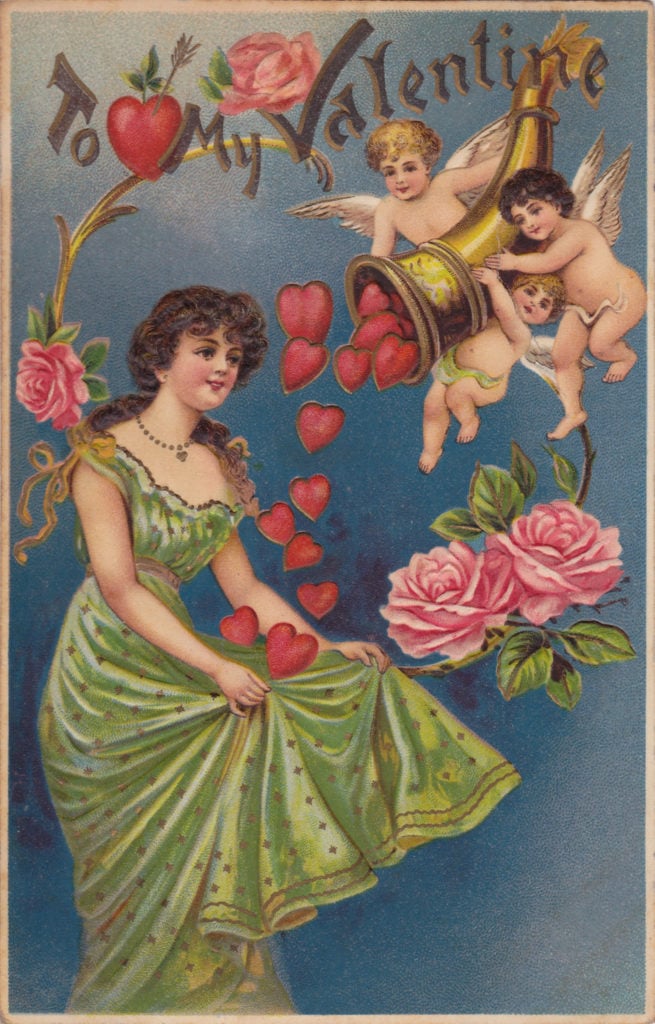The month of February is most well known for its celebration of Valentine’s Day, a holiday which appreciates love and romance across the world. In modern times, Valentine’s Day traditions have become mostly commercial, with stores selling Valentine’s themed candies and items to gift to your loved ones. However, the version of Valentine’s Day we have come to know and love differs greatly from its origins.
Valentine’s Day originated as a Christian feast holiday honoring Saint Valentine, who was known for being a martyr and was heavily associated with love. There are several legends about Saint Valentine, including being persecuted in the Roman Empire for ministering to Christians, restoring sight to the blind daughter of his jailer, and performing weddings for Christian soldiers that were not allowed to marry under Roman law.
These stories didn’t come from just one man’s life, though. It turns out, Valentine was a pretty popular name in ancient Rome, and many martyred saints went by the name of Valentine. Most scholars agree that there are two main Saint Valentines that are connected to the holiday: Valentine of Rome, a priest that was executed in the year 269, and Valentine of Terni, a bishop that was similarly martyred in 273, under the prosecution of Roman Emperor Aurelian. However in total, there have been about a dozen St. Valentines throughout history, and at least one pope.
Some historians have suggested Valentine’s day, much like many other Christian holidays, was based on pagan traditions in an effort to encourage conversion to Christianity. Specifically, it might have been inspired by Lupercalia, a Roman festival which celebrated fertility and occurred in mid-February. This tracks with early European folklore surrounding the holiday, which connected it to the advent of Spring. It’s important to note that neither Valentine’s Day or Lupercalia would have associations with love until 1400. These connotations arose when Charles VI of France issued the Charter of the Court of Love, which announced a lavish celebration on February 14 in which women would hear about and rule on disputes from lovers.
In the 15th century, the tradition of writing romantic letters on Valentine’s Day seemingly began, and finally, in the early 19th century, the holiday started to become what we know it as today. British factories began producing Paper Valentines en masse, and in 1835, 60 thousand Valentine’s Day cards were sent by post in the UK. Following postal reforms in 1840 that reduced the cost of sending mail, this number increased to 400 thousand cards. This trend soon spread to the U.S, as the first mass-produced Valentine’s Day cards in the United States were sold in 1848.
In 1868, the British chocolate company Cadbury began selling heart shaped boxes of chocolate for Valentine’s Day, and soon, gifting both chocolate and cards became a staple of the holiday. In the 20th century, this tradition was extended to all kinds of gifts, including flowers, stuffed animals, and jewelry.
Over 25 million valentines are sent each year in the United Kingdom, and about 190 million valentines are sent each year in the United States. While some other countries also celebrate Valentine’s Day the way we do, like Chile, Denmark, and France, others have similar or adjacent celebrations, like China’s Qixi Festival, which occurs in August, or Brazil’s Dia dos enamorados. In Finland, Estonia, and Mexico, Valentine’s Day is a celebration of platonic love, and in Japan and Ghana, it’s all about chocolate. Around the world, cultures have tied different meanings and values to our holiday of love.
It’s safe to say that Valentine’s Day has evolved a lot from the feast it started as. Whether you’re celebrating this year’s Valentine’s Day with someone special, or just eating chocolate at home, it’s interesting to think about where these traditions come from, and the saint that started it all. Or, well, saints. Seriously, why are there that many St. Valentines?









